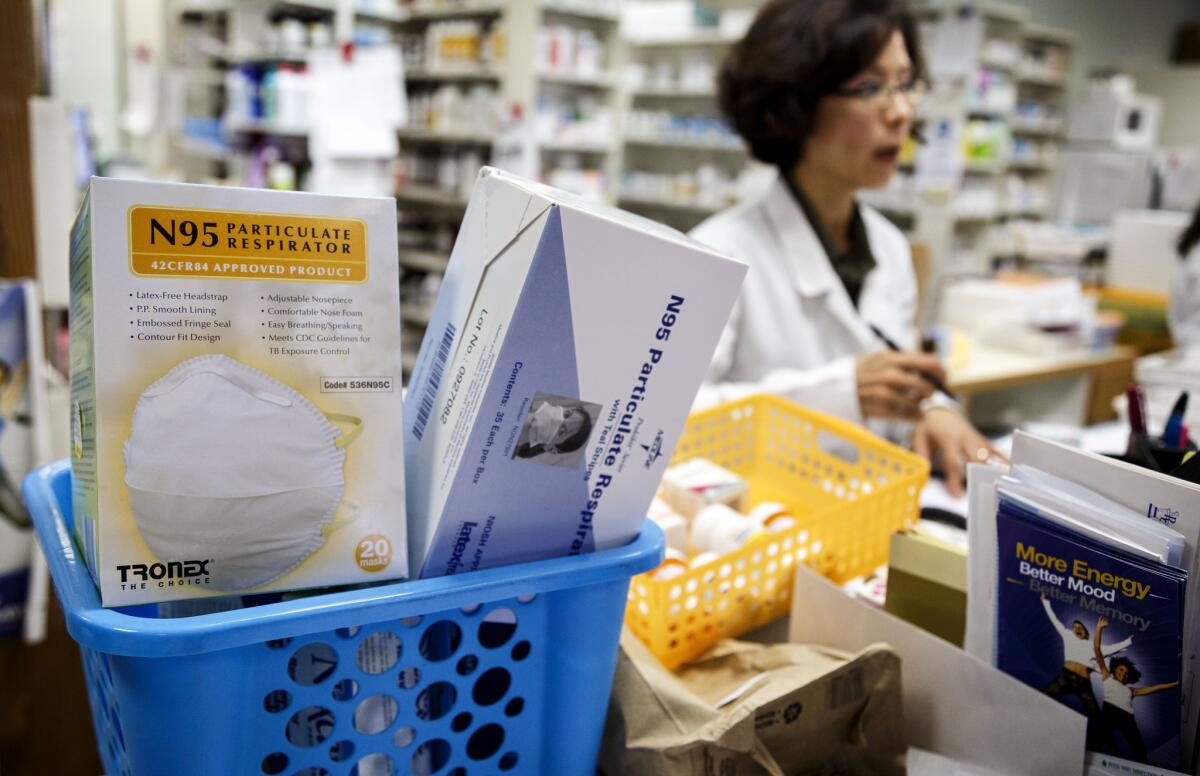California fails at giving patients actual medical prices, report shows

Assorted health products on the counter at Woori Pharmacy in Koreatown.
- Share via
California received a failing grade once again in an annual report that shows how much access consumers have to actual prices for medical care.
The report card issued Wednesday by two nonprofit groups found that 45 states, including California, fared poorly at making price information easily accessible on public websites or through claims databases for care at hospitals, clinics and physician offices.
The only state to receive an A grade was New Hampshire thanks to its new health cost website. Only four other states received grades higher than an F.
Vermont and Virginia earned C’s, and Colorado and Maine scored B’s on the report released by the Catalyst for Payment Reform and the Health Care Incentives Improvement Institute.
The report’s authors noted, however, there was still time for lawmakers in some states like California to pass laws mandating more disclosure of prices.
A 2006 California law does require hospitals in the state to publish their average charges for common procedures on a state website. But beyond that, there is no requirement for hospitals to provide a listing of actual prices paid by insurers or consumers.
California lawmakers, insurance regulators and employer groups have been working on initiatives to reveal details on the amounts paid to medical providers.
There are also entrepreneurs and private websites trying to fill the void with data on average prices for various procedures and tests.
“At the end of the day, what patients need is information that is customizable to them that helps them plan financially,” said Suzanne Delbanco, executive director at the Catalyst for Payment Reform in Berkeley.
“We have been advocating for more transparency around prices because consumers have greater cost sharing, and they’re increasingly the steward of their healthcare resources. We don’t want them to operate in the dark,” she said.
Patients might have access to price estimates through their insurer or employer before seeking treatment. Delbanco said those tools have gotten better, but there’s still room for improvement.
Health policy experts say the steady rise in policyholder deductibles in recent years has made this issue even more pertinent to consumers.
More to Read
Inside the business of entertainment
The Wide Shot brings you news, analysis and insights on everything from streaming wars to production — and what it all means for the future.
You may occasionally receive promotional content from the Los Angeles Times.









